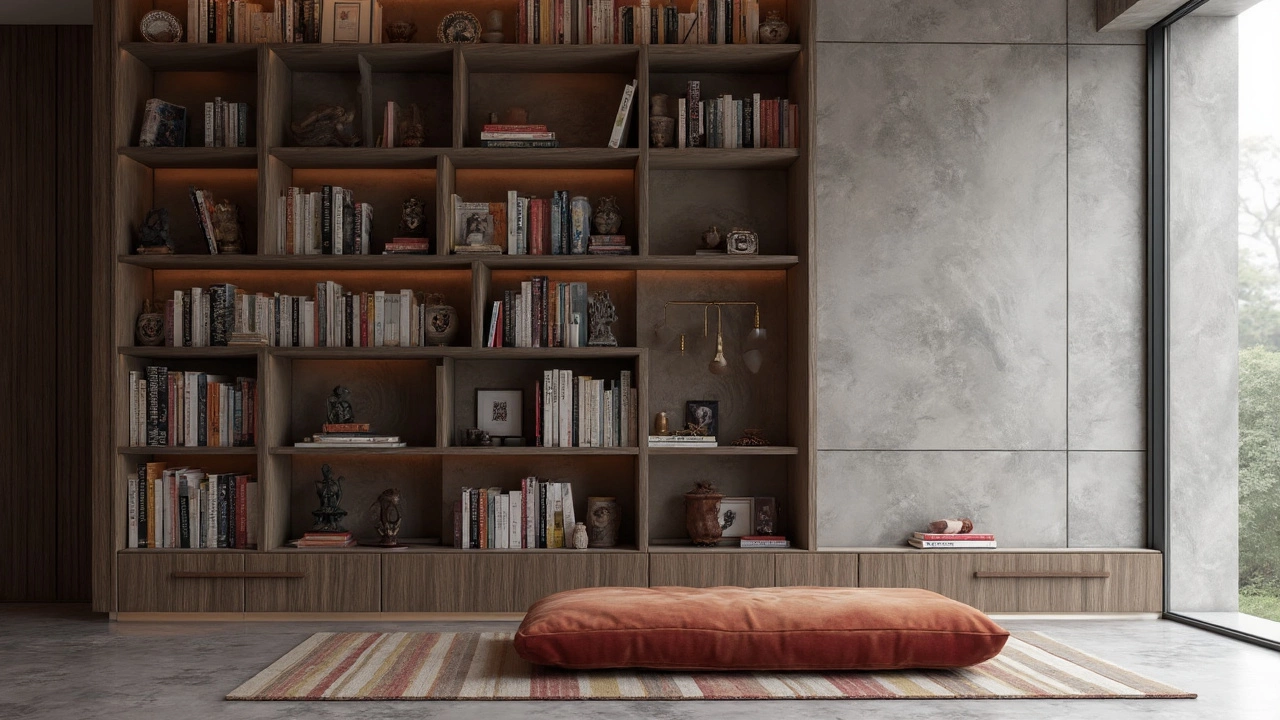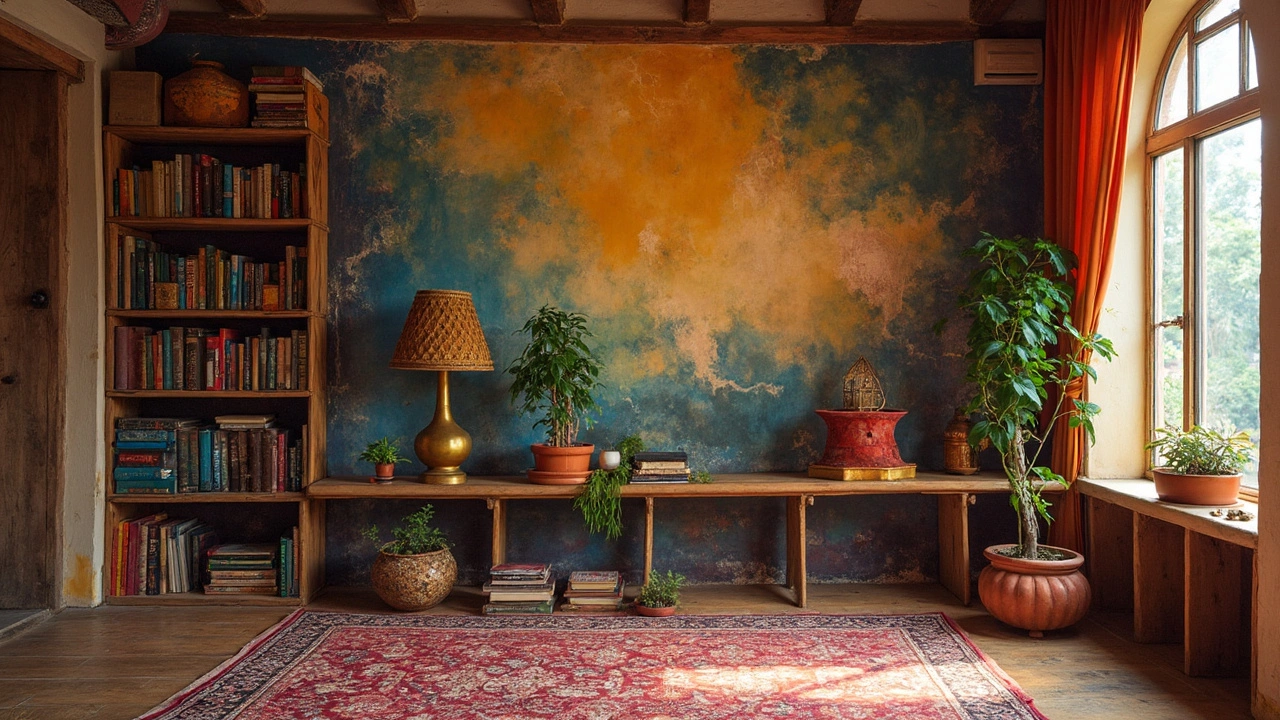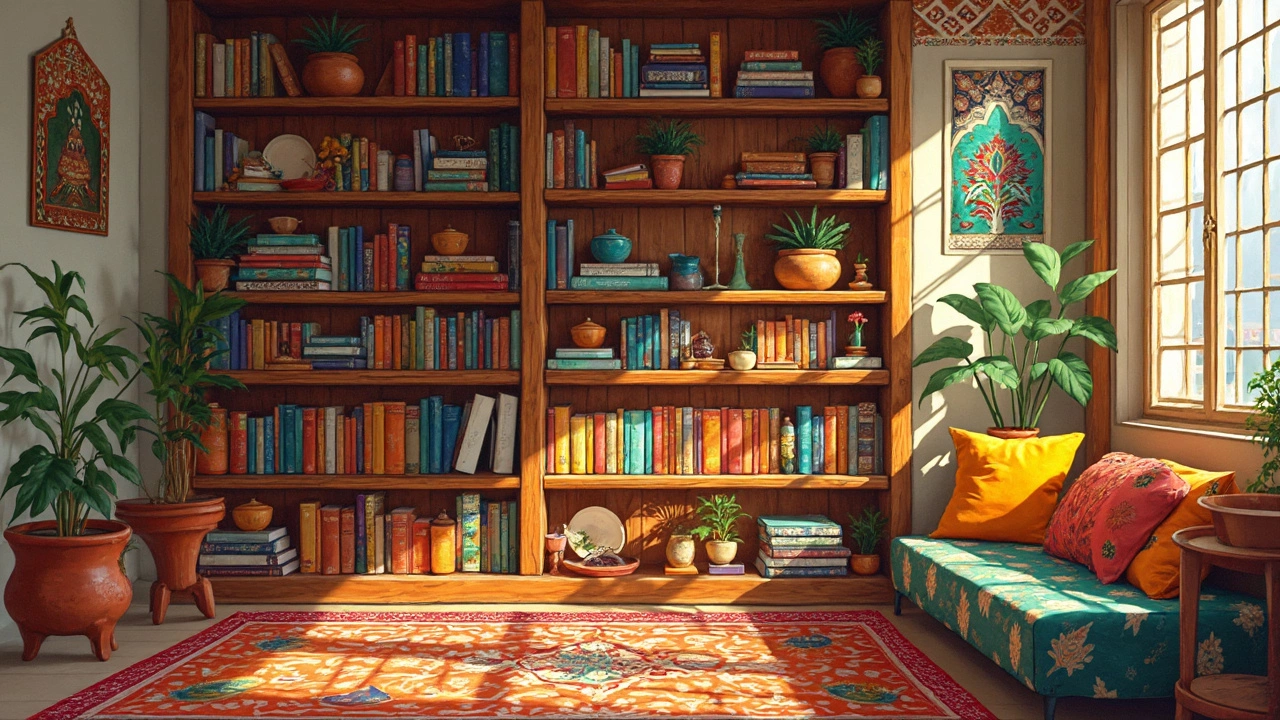Ever looked at your bookshelf and felt a mix of pride and chaos? You're not alone. The bookshelf rule is a handy method to ensure that both your books and your mental space remain pleasantly organized. It balances aesthetics and function, giving you a clutter-free environment and a joy to look at.
Start with understanding your space and needs. Do you have more books than shelf space? Consider going vertical with taller bookshelves or opting for modular ones that can expand. It’s not just about cramming everything in; it’s about making your bookshelves work for you.
Next, it’s time to think about arranging those beloved books. Grouping by genre or author is the classic approach, but don’t shy away from more visual methods like arranging by color or size. It's all about what feels right and is most accessible for you.
Let's not forget the finishing touches. Personalizing your bookshelf with decorative items, small plants, or framed pictures can add character and warmth to your bookcases. These touches are not just for show—they help break the monotony and create a dynamic display.
- Understanding the Bookshelf Rule
- Choosing the Right Bookshelf
- Organizing and Arranging Books
- Adding Personal Touches
- Maintaining Order and Style
Understanding the Bookshelf Rule
The bookshelf rule is not just about squeezing as many books as possible into a small space. It's about achieving a seamless blend of style and practicality.
So, where did this concept originate? It's a modern principle, born from the minimalist movement that emphasizes 'less is more.' By applying it, you can enjoy your vast collection without the overcrowded look that often follows book lovers.
The Basic Idea
The essence of the bookshelf rule is creating balance. This means leaving room for air to flow between your items, which can be achieved by keeping a ratio of 60% books, 30% decorative items, and 10% empty space on each shelf. This simple formula helps create an appealing and organized look without seeming messy.
Benefits Worth Noting
- Improved Accessibility: You can find your books quickly without rummaging through piles.
- Visual Appeal: When set up correctly, your shelf becomes a statement piece in your room.
- Easy Maintenance: Dusting and cleaning are a breeze when everything has its place.
Visualizing the Data
Check out this straightforward division of space:
| Item Type | Percentage |
|---|---|
| Books | 60% |
| Decor Items | 30% |
| Empty Space | 10% |
Adopting these principles makes a world of difference, turning clutter into a cohesive and relaxing part of your home. The bookshelf rule isn't about restricting your passion but showcasing it beautifully.
Choosing the Right Bookshelf
Picking the right bookshelf is a game-changer for any living space. It's not just about slotting in your favorite novels; it's about enhancing the room's overall vibe. When diving into this task, consider your available space, your book collection's size, and style preferences.
Size Matters
First, get a grip on the space you have. A colossal bookshelf in a tiny room can feel overwhelming, while a small one might leave you wanting more storage. Measure your walls and floors first. You don't want to fall in love with a bookshelf that just doesn't fit. If you're a book hoarder, think vertical. Tall bookshelves utilize the often-ignored upper spaces, freeing up more room below for chairs or tables.
Styles and Materials
Next up, it's about aesthetics. Do you fancy a classic wooden bookshelf, or does a modern metal look tickle your fancy? Wood bookshelves give that cozy, traditional feel, whereas metal adds an industrial and sleek touch. Think about the color too. Dark wood or black metal can make books stand out, while lighter shades blend seamlessly with most decor.
Think Functionality
The function is key. Would you like adjustable shelves to fit those unwieldy DIY guides or art books? Some bookshelves come with book organization perks like built-in cabinets or drawers for extra knick-knacks. If you have kids, sturdy shelves that won't topple over are essential. Ikea, for instance, offers kid-friendly models that are both safe and stylish.
Budget Considerations
And, of course, budget. Bookshelves range widely in price. Do some research online, compare price points, and read reviews. Sometimes pre-loved furniture can give a unique touch at a fraction of the cost.
| Material | Average Cost |
|---|---|
| Wood | $200 - $1000 |
| Metal | $150 - $700 |
| Composite | $75 - $400 |
Finding the perfect shelf is all about finding that sweet spot between function, form, and price. Choose wisely, and your bookshelf will not only hold your stories but also tell one of its own.

Organizing and Arranging Books
Organizing and arranging your books isn't just about keeping them neat—it's about making your bookcases functional and inviting. A well-organized bookshelf can be a game-changer in your living space.
Start with a Strategy
First off, decide on a strategy that suits your style of reading and lifestyle. Do you grab a book at random, or do you search by author or genre? This will help when arranging your books.
Classic Organization Tips
Many find it helpful to start with categories. You might separate books by genre or author. This logical method makes it easy to locate what you're looking for. Another popular technique is arranging books by color, creating a rainbow effect that's visually stunning.
NASA scientist and book lover Sujata Jacob says, "A bookshelf is an evolving art piece. It's not just storage; it's a dynamic representation of what you love and care about."
Visual Balance and Accessibility
Keep a balance between large and small books by creating a visual rhythm. Larger tomes can anchor sections, while smaller ones or paperbacks fill in spaces. Consider the weight too; heavier books should ideally go on lower shelves.
Here's a quick tip: leave some space open. It provides a resting spot for the eyes and makes room for new books, allowing your bookcases to breathe and adapt as your collection grows.
Add Personal Touches
Sprinkle in some personal flair, like small trinkets, framed photos, or even small plants, to maximize your book storage and keep things lively.
Consider the Layout
- Horizontal stacking mixes it up from the usual vertical stacking and can function like a bookend.
- Lean art prints or photographs against the back, adding layers and dimension.
Remember, organizing your bookcases isn't a one-time task. Regularly revisiting their arrangement ensures your shelves evolve alongside your tastes.
Adding Personal Touches
Transforming your bookshelf into something more than just a storage space can be a lot of fun. Adding personal touches breathes life into your bookcases and truly makes them part of your home. It's all about mixing style with your own personality, creating a space that tells a story.
Mixing Decor with Books
An easy way to add personality is by incorporating decorations. Think about items like small sculptures, knick-knacks from trips, or even your favorite trinkets. Not only do these items break up the uniform lines of books, but they also bring a piece of you into the mix.
Using bookends is also a great trick. These can be both functional and decorative. Choose something that resonates with you or reflects the theme of your book collection. For example, if you love history, consider bookends shaped like ancient artifacts or historical figures.
Incorporating Nature
Adding some greenery can make your book storage stand out. Opt for small plants like succulent pots or hanging plants that can dangle over edges. They bring freshness and a sense of calmness to your space.
Family and Memories
Your bookshelf isn't just about books—it can be a showcase of memories. Consider adding framed photos of family and friends or souvenirs from travels. A well-placed photograph can evoke nostalgia and adds a unique touch that’s inherently yours.
Lighting It Up
Don’t underestimate the power of proper lighting. A small lamp or even some string lights can highlight your collection and make it an inviting place. It’s practical too, especially for those late-night reading sessions. Plus, it gives an extra layer of depth and warmth to your bookshelves.
Adding these personal touches will not only make your bookcases more inviting but also showcase who you are. It’s about striking the right balance, creating a book organization that feels genuinely yours. Take your time with it and let your shelves evolve as your tastes and interests do.

Maintaining Order and Style
Keeping your bookshelf stylish yet organized doesn’t have to be a hassle. Once you’ve set up your shelves the way you like, maintaining them just requires a bit of regular attention. This will ensure that your bookcases remain both functional and attractive.
Regular Decluttering
Nothing messes up a beautifully arranged bookshelf like unnecessary clutter. Every few months, take some time to reassess the contents of your shelves. Ask yourself questions like, 'Have I read this?’ or ‘Will I read this again?’ Donate or sell the books you no longer love. This keeps space open for future favorites and ensures you’re only keeping what really matters to you.
Dusting and Cleaning
Keeping your shelves dust-free isn’t just about cleanliness; it enhances orderliness and style. A quick wipe down with a microfiber cloth can prevent that dreaded layer of dust from building up. Make this a part of your weekly cleaning routine, and your shelves will stay looking fresh.
Re-evaluate Your Arrangement
Change can be a good thing, especially when it comes to keeping your book organization visually appealing. Feel free to move books around, change their order, or introduce new arrangements.
- Arrange books vertically and horizontally for a dynamic look.
- Mix in some decorative items like small sculptures or framed pictures.
- Play with color by grouping similarly colored books together.
Style Tips for Lasting Impact
A few style tweaks can have a lasting impact on the overall appearance of your bookshelves. Incorporating different heights and layers can draw the eye in and create interest.
If you’re after a minimalist look, ensure there’s enough space around your books to let each one stand out. Alternatively, for a cozier, packed look, add in layers, but keep them orderly and intentional. Remember, your bookshelves are an extension of you—make them reflect your personal style and needs.
In maintaining this book organization rule, your bookshelf will continue to be a joy, not a chore.

